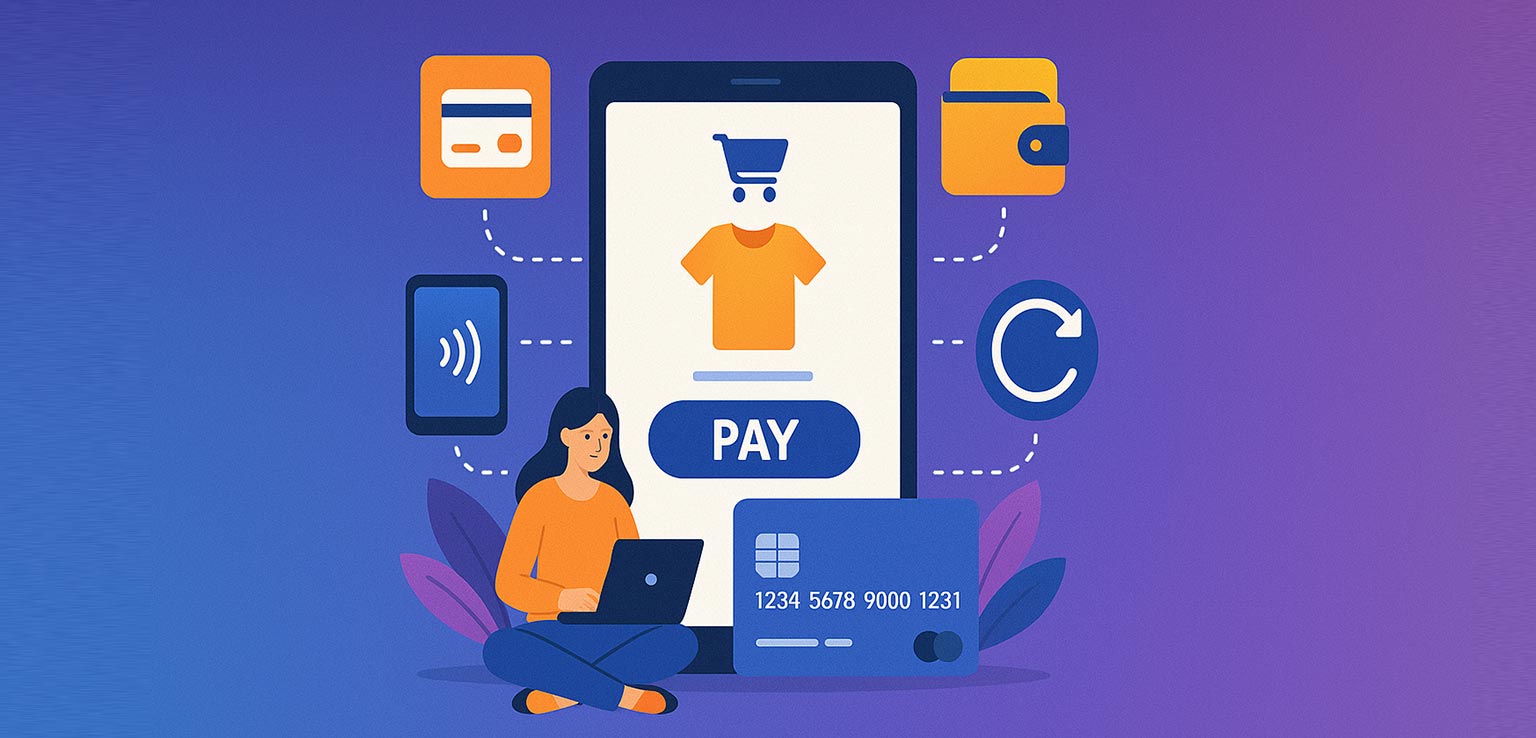E-commerce has grown from a convenient alternative to traditional shopping into the dominant mode of retail. What was once a desktop-only experience with limited payment options has transformed into a global ecosystem that adapts to the needs of diverse consumers. At the heart of this revolution lies the evolution of payment systems. The future of e-commerce is not only about faster delivery and better product choices—it’s about payments that adapt to your needs, making the shopping experience seamless, secure, and personalized.
The Evolution of Payment Systems in E-commerce
From Cash on Delivery to Digital Wallets
In the early days of online shopping, many customers relied on cash on delivery (COD). While it offered trust, it wasn’t scalable. Digital wallets like PayPal, Apple Pay, and Google Pay changed the game by offering convenience and security. Today, wallets have become a standard payment method, especially among younger demographics.
Rise of Contactless and Mobile Payments
The COVID-19 pandemic accelerated the adoption of mobile and contactless payments. Tap-to-pay solutions and QR-based payments allow customers to make purchases with just a smartphone. This speed and simplicity are key drivers in the future of checkout.
The Role of Buy Now, Pay Later (BNPL) Services
BNPL solutions such as Klarna and Afterpay are reshaping consumer expectations. Instead of relying on credit cards, shoppers can spread out payments with minimal or no interest, making e-commerce purchases more accessible and budget-friendly.
Key Trends Shaping the Future of E-commerce Payments
Artificial Intelligence and Personalized Checkout
AI-powered systems are analyzing user behavior to recommend the most convenient payment method. This personalization reduces cart abandonment and creates a smoother experience.
Cryptocurrency and Blockchain in Retail Payments
While still in its infancy, cryptocurrency adoption is growing. Blockchain ensures secure, transparent, and low-cost transactions, especially valuable for cross-border trade.
Cross-Border Payments Made Seamless
As more businesses sell internationally, reducing friction in cross-border payments is critical. Future systems will focus on real-time conversion, lower fees, and multi-currency wallets.
Subscription and Recurring Payment Models
From streaming services to subscription boxes, recurring billing is on the rise. Automated payments eliminate friction, creating long-term customer loyalty.
Customer-Centric Payment Solutions
Omnichannel Experiences and Unified Payments
Whether shopping in-store, online, or via an app, customers expect the same payment experience. Omnichannel solutions ensure consistency across touchpoints.
The Importance of Flexible Payment Plans
Flexibility is becoming the new norm. Offering multiple payment options—BNPL, EMIs, or pay-later services—helps capture diverse audiences.
Security and Trust in Payment Gateways
Consumers demand both convenience and trust. Future gateways will prioritize biometric authentication, two-factor security, and fraud detection powered by AI.
The Role of Fintech in Redefining Payment Experiences
Embedded Finance in E-commerce Platforms
Fintech has blurred the lines between banks, retailers, and technology providers. Embedded finance allows e-commerce platforms to integrate payment solutions directly into their ecosystems. For example, Shopify merchants can access Shopify Payments without relying on external gateways. This integration reduces costs, speeds up transactions, and simplifies management for businesses.
Digital Identity and Biometric Authentication
Passwords and PINs are quickly becoming outdated. Biometric methods like fingerprint scanning, facial recognition, and voice authentication are enhancing payment security. These technologies not only strengthen fraud prevention but also make transactions faster and more user-friendly.
Open Banking and Instant Transfers
Open banking is transforming how data flows between banks and e-commerce platforms. By granting permission-based access to financial information, it allows instant transfers and reduces the reliance on intermediaries. For consumers, this means lower fees and quicker payments.
Challenges and Risks in the Future of E-commerce Payments
Cybersecurity and Fraud Prevention
With digital payments rising, so do cyber threats. Hackers exploit weaknesses in systems to steal data or funds. The future of e-commerce payments will heavily depend on advanced fraud detection, encryption, and AI-driven monitoring systems.
Regulatory and Compliance Concerns
Each country has its own rules for financial transactions. E-commerce businesses operating globally must navigate data privacy laws, anti-money laundering regulations, and consumer protection acts. Ensuring compliance while maintaining a smooth checkout process remains a balancing act.
Balancing Innovation with Consumer Protection
While innovation fuels growth, it must not come at the expense of consumer trust. Businesses must balance offering new payment methods with ensuring they are safe, reliable, and transparent.
Case Studies: Brands Leading the Way in Payment Innovation
Amazon’s One-Click Checkout
Amazon set the benchmark for convenience with its patented one-click checkout. By saving customer information securely, it eliminated unnecessary steps in the buying journey, dramatically reducing cart abandonment.
Shopify’s Payment Flexibility
Shopify empowers small and medium businesses with integrated payment solutions. Merchants can offer BNPL, digital wallets, and credit card processing without complex setups. This flexibility drives higher conversions.
What Consumers Expect from Future Payment Systems
Speed and Convenience
Consumers value payment systems that work in seconds. Instant approval, one-tap checkouts, and contactless solutions will dominate the future.
Transparency in Costs
Hidden fees frustrate buyers. Shoppers expect clear, upfront pricing when using credit, BNPL, or international payments. Businesses that maintain transparency will earn stronger trust.
Global Accessibility
As e-commerce becomes borderless, payment systems must work seamlessly across different currencies, banks, and financial systems. Inclusivity for underserved markets is equally important to expand global reach.
FAQs on the Future of E-commerce Payments
1. What is the biggest payment trend in e-commerce today?
The biggest trend is the rise of BNPL (Buy Now, Pay Later) services, as they provide flexible, interest-free options that appeal to younger shoppers.
2. Will cryptocurrency become mainstream in online shopping?
Cryptocurrency adoption is growing, but mainstream use depends on regulation, stability, and broader merchant acceptance. However, blockchain technology will play a vital role in secure transactions.
3. How will AI impact e-commerce payments?
AI will personalize checkout, predict preferred payment methods, and strengthen fraud prevention by detecting unusual patterns in real time.
4. Are mobile wallets safer than credit cards?
Yes, in many cases. Mobile wallets use tokenization and biometric authentication, making them harder to hack compared to traditional card systems.
5. What challenges do businesses face with global e-commerce payments?
Businesses face issues like currency conversion, regulatory compliance, fraud risks, and high cross-border transaction fees.
6. How can small businesses keep up with new payment trends?
They can partner with fintech providers like Stripe, Shopify, or PayPal, which offer integrated solutions without heavy infrastructure costs.
Conclusion: Payments That Adapt to Every Consumer’s Needs
The future of e-commerce payments is not about one universal method—it’s about adaptability. As consumers demand speed, security, and flexibility, businesses must offer payment solutions that match these expectations. Whether through AI-driven personalization, blockchain transparency, or BNPL accessibility, the direction is clear: payments must adapt to your needs.
E-commerce success will increasingly depend on payment systems that remove barriers, build trust, and enhance the shopping experience. Businesses that embrace these innovations will not only survive but thrive in the digital marketplace.
Recommended Reading:
The Future of Global Fintech: From Rapid Expansion to Sustainable Growth (Second Edition)
Future of payments: How central banks are driving innovation

Antony Robinson is an experienced IT expert, information architect and a customer experience evangelist. He has over 30 years of experience in web technologies, user experience, media, and marketing. Antony is currently the CMO of Novalnet AG, a fintech company in Germany. As CMO, he leads the company’s marketing strategy and fosters collaborations. Antony’s expertise and dedication to technology and innovation make him a valuable leader in his field.












